Система Canon EOS R
Содержание
Lens Innovations
Let’s take a look back at some of Canon’s unique and innovative lenses over recent years:
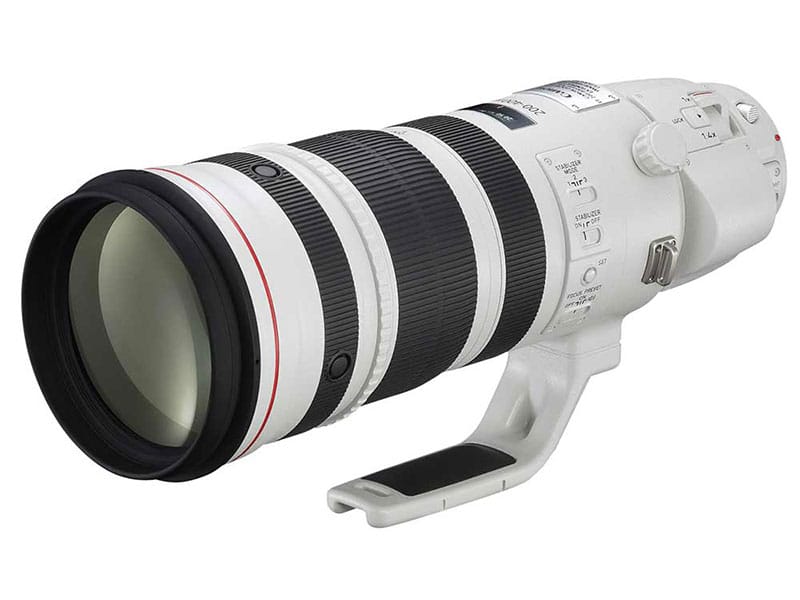
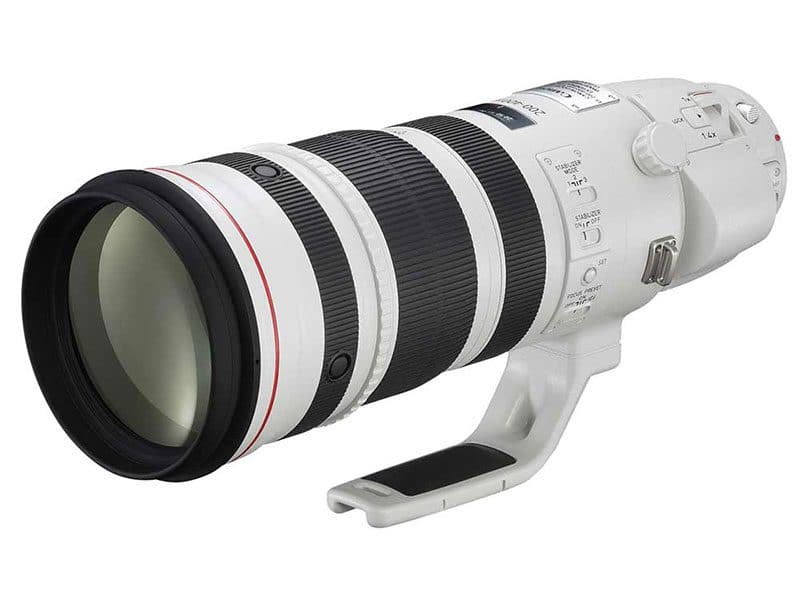
Built-in 1.4x extender
2009 – Canon 17mm f/4 L TS-E – The widest full frame tilt-shift lens there is. In 2017 Nikon finally launched a wide angle tilt-shift lens, but it’s only 19mm.
2009 – Canon 100mm f/2.8 L IS Macro – The first lens to feature Hybrid Image Stabilization to compensate simultaneously for angle and shift camera movements.
2011 – Canon 8-15mm f/4 L Fisheye – The first fisheye zoom lens, allowing a full 180 degree field of view on both full frame and APS-C cameras. Nikon finally launched a roughly equivalent 8-15mm lens in 2017.
2012 – Canon 40mm f/2.8 STM pancake lens – They don’t all have to be big expensive monster lenses. The diminutive 40mm pancake lens always gets a smile when I put it on my camera.
2013 – Canon 200-400 f/4 L IS 1.4x – The first super telephoto lens to have a 1.4x extender built into it. Nikon copied this idea and released their own version of it, but it was 5 years after Canon’s one came to market.
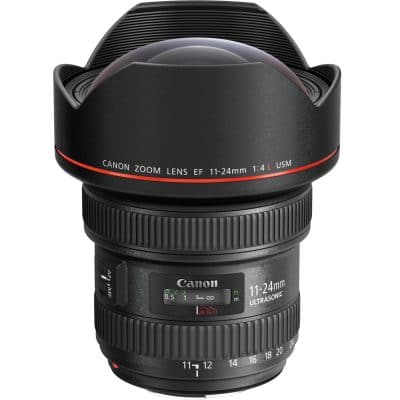
2015 – Canon 11-24 f/4 L – The widest rectilinear full frame lens on the market for Canon or Nikon. Not just wide, but also a stunning performer.
2016 – Canon 400mm f/4 DO II – The only 400mm lens with diffractive optics and probably my favourite Canon lens on the current market due to its tiny size. Nikon have something similar on the way now too, but a super telephoto diffractive optic lens has been in Canon’s lineup for 17 years.
2016 – Canon 28mm STM Macro – The first ever lens to have a built-in ring light in the front.
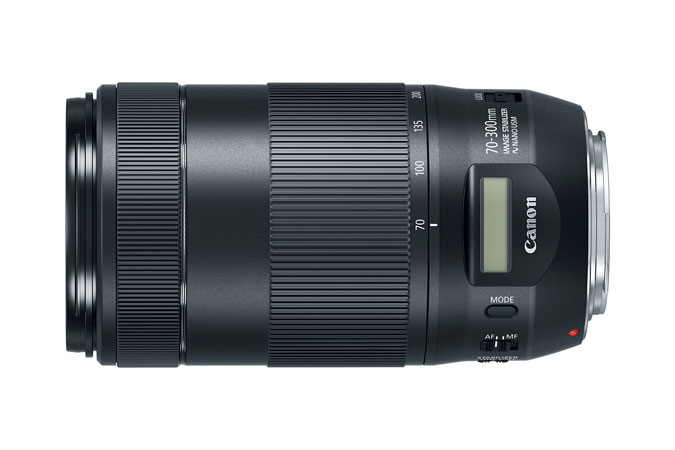
2016 – Canon 70-300 f/4.5-5.6 IS II – The first DSLR lens to have an LCD display on it for displaying focal length and depth of field.
2017 – New TS-E macro lenses – Yes Nikon had two 2:1 tilt-shift lenses first, but instead of just matching them, Canon went one further and added a 135mm f/4 TS-E Macro, the longest focal length tilt-shift lens between the two competing brands, taking Canon’s tally to five TS-E lenses.

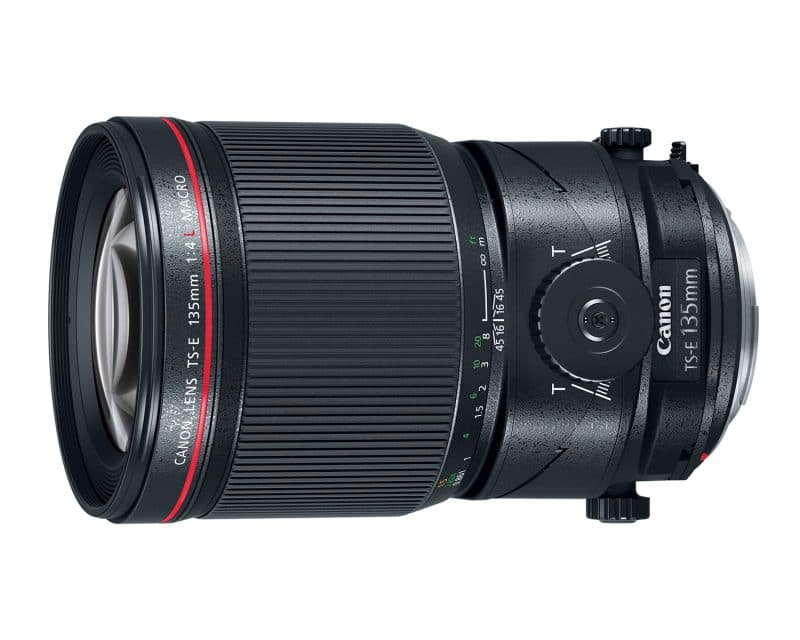
135mm Tilt-Shift Macro
2019? – 600mm f/4 DO IS – Canon has already shown prototypes of a 600mm DO lens, which is likely to come to market within the next couple of years, shaving a huge amount of size and weight off a typical 600mm lens design.
These are just the new innovations that I’m listing here, it doesn’t even take into account the updates that are the 24-70 f/2.8 L II and the 100-400 L IS II which take zoom lens sharpness to a whole new level.
Of course there are some Nikkor lenses that I’d love to see in the Canon lineup as well, such as the 28mm f/1.4, but by and large there has been very little innovation from the Nikkor lens team in recent years. Even the new flagship 70-200 f/2.8 VR3 release in 2016 was met with puzzled faces from many people when they swapped the focus and zoom rings around, causing some major handling issues.
Сравнение характеристик Canon EOS 80D и Nikon D7500
|
MSRP |
$1299 (только корпус), $1749 с объективом 18-140 VR |
$1199 (только корпус), $1799 с объективом 18-135 |
|
Корпус |
||
|
Стиль |
Зеркалка среднего размера |
Зеркалка среднего размера |
|
Датчик изображения |
||
|
Максимальное разрешение |
5568 x 3712 |
6000 x 4000 |
|
Соотношение сторон изображения |
3:2 |
1:1, 4:3, 3:2, 16:9 |
|
Число эффективных пикселей |
21 мегапиксель |
24 мегапикселя |
|
Полное разрешение |
22 мегапикселя |
26 мегапикселей |
|
Размер датчика |
APS-C (23,5 х 15,7 мм) |
APS-C (22,5 х 15 мм) |
|
Тип датчика |
CMOS |
CMOS |
|
Процессор |
EXPEED 5 |
DIGIC 6 |
|
Изображение |
||
|
ISO |
ISO 100 — 51200 (с возможностью расширения до 50 — 1640000) |
Авто, 100-16000 (расширяется до 25600) |
|
Boosted ISO (минимум) |
50 |
|
|
Boosted ISO (максимум) |
1640000 |
25600 |
|
Настройки баланса белого |
12 |
6 |
|
Пользовательский баланс белого |
Есть (5) |
Есть |
|
Стабилизация изображения примечания |
3-осевая электронная при съёмке видео Full HD и ниже |
Нет |
|
Несжатый формат |
RAW |
RAW |
|
Уровни качества JPEG |
Fine, Normal, Basic |
Хорошо, нормальный |
|
Оптика и фокусировка |
||
|
Автофокус |
|
|
|
Ручная фокусировка |
Есть |
Есть |
|
Количество точек фокусировки |
51 |
45 |
|
Крепление объектива |
Nikon F |
Canon EF/EF-S |
|
Множитель фокусного расстояния |
1.5× |
1.6× |
|
Экран и видоискатель |
||
|
Крепление экрана |
Наклон |
Полностью шарнирный |
|
Размер экрана |
3.2″ |
3″ |
|
Разрешение экрана |
922000 точек |
1040000 точек |
|
Сенсорный экран |
Да |
Да |
|
Тип экрана |
TFT LCD |
TFT LCD |
|
Live View |
Есть |
Есть |
|
Тип видоискателя |
Оптический (пентапризма) |
Оптический (пентапризма) |
|
Охват видоискателя |
100% |
100% |
|
Увеличение видоискателя |
0.94× |
0.95× |
|
Возможности фотосъёмки |
||
|
Минимальная скорость затвора |
30 сек |
30 сек |
|
Максимальная скорость затвора |
1/8000 сек |
1/8000 сек |
|
Приоритет диафрагмы |
Есть |
Есть |
|
Приоритет выдержки |
Есть |
Есть |
|
Режим ручной экспозиции |
Есть |
Есть |
|
Режимы «сцена» |
Есть |
Есть |
|
Встроенная вспышка |
Да (Всплывающая) |
Да |
|
Диапазон вспышки |
12.00 м (при ISO 100) |
12.00 м (при ISO 100) |
|
Внешняя вспышка |
Да (горячий башмак, Беспроводной плюс разъем синхронизации) |
Да (через горячий башмак) |
|
Скорость серийной съёмки |
8,0 кадров в секунду |
7,0 кадров в секунду |
|
Таймер |
Да (2, 5, 10 или 20 сек) |
Да (2 или 10 сек) |
|
Режимы замера экспозиции |
|
|
|
Компенсация экспозиции |
± 5 (по 1/3 EV, 1/2 EV шагов) |
± 5 (по 1/3 EV, 1/2 EV шагов) |
|
Особенности видеосъемки |
||
|
Формат |
MPEG-4, H.264, |
MPEG-4, H.264, |
|
Видеосъемка примечания |
Поддержка MOV и MP4 |
Выбор ALL-I или IPB кодеков |
|
Режимы |
|
1920 x 1080 (60p, 30p, 24p), 1280 х 720 (60p, 30p) |
|
Микрофон |
Стерео |
Стерео |
|
Динамик |
Моно |
Моно |
|
Хранение данных |
||
|
Типы карт памяти |
SD/SDHC/SDXC |
SD/SDHC/SDXC (поддержка UHS-I) |
|
Связь |
||
|
USB |
USB 2.0 (480 Мбит/сек) |
USB 2.0 (480 Мбит/сек) |
|
HDMI |
Да (Mini-HDMI) |
Да (Mini-HDMI) |
|
Порт микрофона |
Есть |
Есть |
|
Порт наушников |
Есть |
Есть |
|
Беспроводная связь |
Встроенная |
Встроенная |
|
Wi-Fi |
С низким потреблением энергии Bluetooth |
802,11b/g/n с NFC |
|
Дистанционное управление |
Да (проводной, беспроводной, смартфон) |
Да (проводной, беспроводной или через смартфон) |
|
Физические характеристики |
||
|
Экологическая защита |
Есть |
Есть |
|
Источник питания |
Аккумуляторная батарея |
Аккумуляторная батарея |
|
Описание аккумуляторной батареи |
Литий-ионная аккумуляторная батарея RU-EL15a и зарядное устройство |
Литий-ионный аккумулятор LP-E6N и зарядное устройство |
|
Срок службы батареи (CIPA) |
950 кадров на одном заряде |
960 кадров на одном заряде |
|
Вес включая батарею |
720 грамм |
730 грамм |
|
Габаритные размеры |
136 х 104 х 73 мм |
139 х 105 х 79 мм |
|
Другие особенности |
||
|
Датчик ориентации |
Есть |
Есть |
|
Запись Timelapse |
Есть (выход 4K) |
Есть |
|
GPS |
Опционально GP-1A |
Нет |
Видео

На первый взгляд D7500 может показаться более серьёзной видеокамерой. Оба устройства предлагают разъёмы для наушников и микрофона, а также HDMI, они имеют сенсорные экраны для выбора фокуса, но в то время как 80D предлагает максимальное разрешение записи видео в Full HD/60 кадров в секунду, D7500 может снимать 4K
Но это не так важно, как следующее
Режим видео 4K на D7500 работает с кропом 1.5x наряду с существующим кропом 1.5x из-за использования датчика формата APS-C. Это значит, что суммарно обрезка полезной площади, с которой снимается изображение относительно полного кадра сокращается в 2.25 раза. Это означает, что даже при работе с фокусным расстоянием объектива 18mm на D7500 вы будете получать эквивалентное поле обзора 40,5mm при съемке 4K-видео. С другой стороны, D7500 не имеет кроп-фактора при съемке Full HD, так же, как EOS 80D, поэтому можно утверждать, что с 4K – это просто приятный бонус.
D7500 также поставляется с режимами Зебра и плоским профилем изображения, поэтому данная камера предлагает более широкий спектр возможностей видеооператорам. Это поможет получить больше деталей по сравнению с EOS 80D. Ни одна из рассматриваемых камер не предлагает стабилизацию ан основе сдвига датчика или цифровую стабилизацию, поэтому остаётся полагаться на компенсацию вибраций в объективах.
До сих пор кажется, что Nikon D7500 выигрывает в битве за симпатию видеооператоров, но не так быстро.
Система автофокусировки Dual Pixel дает фотокамере Canon невероятное преимущество, когда дело доходит до автофокуса при видеозаписи. D7500 всё ещё использует устаревшую, набившую оскомину контрастную автофокусировку, что означает долгий поиск фокуса, в то время как EOS 80D будет прилипать к предметам или лицам, и надёжно следить за их перемещением.
В конце концов, несмотря на относительно слабые для 2017 года характеристики видеосъёмки, только Dual Pixel AF является достаточной причиной, чтобы выбрать Canon EOS 80D. Это будет идеальным подспорьем в видеосъёмке, особенно учитывая сенсорный дисплей. Для тех, кто заинтересован в съемке видео, даже сильно кропнутый 4К не сможет побить преимущество невероятно быстрой и точной автофокусировки.
Canon Vs. Nikon Which Brand is Right for You
I encourage you to go into a camera shop with a budget and a have look at the cameras in that price range. The prices between Nikon or Canon are going to be similar.
Don’t look at specs to begin with, only pick up a few cameras. See how easy they are to use and what sort of results they give.
My Canon has a good screen so it’s much easier to review my image quality. I do this using the live view mode. Some of my friends who shoot with Nikon’s have horrible screens in comparison.
These small details add up to make a significant difference. Let them influence your decision. Your first camera is something you should do in the shop, not online.
A lot of people who get into photography tend to do so because their friends have DSLRs. They want to produce the same sort of results. If you like Nikon or Canon, first try a Nikon vs Canon DSLR comparison.
Your friends will no doubt have at least some influence on your decision. They’ll try to convince you to buy the brand that they use. And it’s not actually a bad idea.
Buying the same brand camera as a friend means that you can share lenses and flashes. When you go out taking photos together, you end up having twice as much equipment at your disposal.
And you can lend things to each other all the time. They will also be able to help you learn how to use your camera.
One of my close friends bought a Nikon and was asking me how to take some of the photos that I’d taken. Although I could tell him how I did it, I couldn’t walk him through it on his camera. I didn’t know how to use it.
Finally, think about what you want to do with your camera and where you want it to take you. Both cameras photograph comparatively well in low light, so there need to be other factors.
A friend of mine owned a really good Nikon D300 but ended up selling all of his gear and buying Canon instead, all because he wanted to upgrade to full frame.
The price for a Nikon full frame DSLR (D700) was only a few hundred dollars more than the Canon (5D). But the Nikon was only 12 megapixels compared to Canon’s 21.
The number of megapixels was important for the type of photos he planned to take. If he had stuck with Nikon, this would have cost him a lot more money.
When you’ve taken all the factors I’ve listed in this post into account, it’s clear that there’s no real winner. All it really comes down to is personal taste.
I’m sure I’ve missed something and this sort of topic is usually a great source of arguments. So, if you have something you’d like to contribute, either leave a comment at the bottom or come over to our Facebook page.
pin it!
Save this article to your Pinterest profile to access it later!
Usability
One of the most important factors to consider when buying a new camera is usability. This goes a long way in the Canon vs Nikon battle.
How does it feel in your hand? What’s it like to shoot with? How easy is it to navigate the menu?
You can answer these questions when you pick up a camera for the first time. For me, they tend to outweigh all the other reasons for buying a camera.
When I picked up my first Canon, it felt right. You shouldn’t be swayed by the style of the little red detail on a Nikon, or the big grey lenses from Canon. You should see what works for you and stick with it.
It’s not often that people switch between brands. When they do, it’s usually down to usability. Any good photographer knows that they can produce excellent results with basic gear.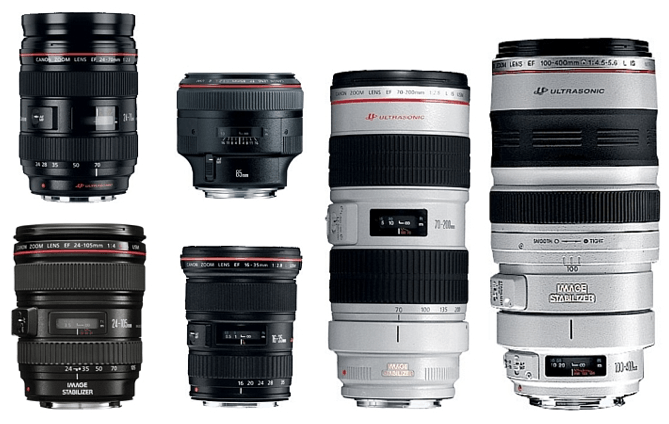
Compatibility Canon Vs. Nikon
This is one of the biggest reasons why Canon and Nikon are more popular than the other brands. They’re compatible with much older equipment.
Canon’s EOS range goes back to 1987 and Nikon’s F mount range of lenses to 1959. This means that you can take any EOS or F lens and stick it on your camera – it’ll work.
The main difference between the two is the autofocus. With Canon, all the EOS lenses will autofocus whereas, with Nikon, only the AF-S lenses do.
If you want your Nikon lens to autofocus, you need to choose an AF-S lens. This narrows your options. (By the way, you want your lens to autofocus.)
Nikon decided to remove the autofocus motor from their entry-level cameras. This is to keep them lightweight, compact and cheaper. This goes a long way in deciding between Nikon or Canon.
Currently, the Nikon D40, D40X, D60, D3000, D3100, D5000 and D5100 don’t include motors. Canon have always had the autofocus motors in the lenses, not the bodies.
This isn’t a problem for Canon users. They feel that Canon professional cameras are the best choice in the battle of Nikon vs Canon.
The past 25 years’ lenses are enough to keep most photographers satisfied. But if you know of any much older lenses that you must have on your camera, Nikon is the way to go.
I’ve recently upgraded some of my lenses to Canon’s L-Series. The jump in quality is noticeable, not least in the autofocus. For this, Canon professional cameras win.
They both use ultrasonic motors. These are fast and accurate. And provide me with excellent results each time. Older lenses use older motors which are less reliable and don’t perform so well.
If you’re looking to buy an old lens, make sure you test it out first.
Speaking of the crop factor. You may be interested to know that Canon’s professional cameras have sensors that are a little bit smaller in their entry-level bodies. This gives more of a crop.
The crop factor is 1.6 rather than 1.5. If you put a 50mm lens on a crop body, you’re going to be seeing the equivalent of 80mm, rather than 75mm.
It’s not a huge difference but it may be something you want to consider if you buy a lot of full frame lenses.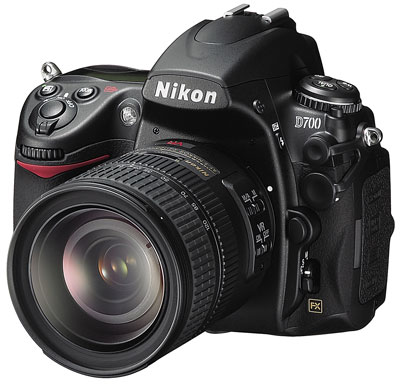
Датчик и качество изображения

Nikon D7500 унаследовал новый APS-C датчик с разрешением 20MP от его высококлассного брата D500
Этот датчик может показаться менее продуктивным по сравнению с разрешением 24MP в Canon EOS 80D, но количество пикселей – это не единственный параметр, на который нужно обращать внимание
Учитывая то, что датчик D7500 такой же, как в D500, качество изображения должно быть аналогично высококлассной камере, тем более производительность ISO в нестандартном режиме по сравнению с EOS 80D у Nikon выше, и это очень важно. D7500 может создавать изображение с меньшим количеством шума при съёмке в условиях низкой освещённости, что приводит к улучшению детализации
D7500 может создавать изображение с меньшим количеством шума при съёмке в условиях низкой освещённости, что приводит к улучшению детализации.
Камеры Nikon также обладают своеобразной цветопередачей, с теплым, насыщенным желтыми и красными цветами и яркой — еще нейтральной – зеленью, которую многие фотографы очень любят, но учитывая то, что подавляющее большинство снимков проходят обработку, это играет не значительную роль. Nikon D7500, безусловно, выглядит конкурентоспособно, несмотря на более низкое разрешение перед EOS 80D.
Introduction
Back in the golden age of film photography, there were plenty of brands around. You could choose some awesome cameras. The Canon vs Nikon debate was a lot less prominent.
But we’ve entered the age of digital photography. Outside mirrorless cameras, The two biggest players are Canon and Nikon DSLRs. The question many ask is: as a beginner photographer about to buy one of them, which one do I get?
Which is the best camera body for beginners – digital Canon or Nikon?
Before I go any further, I’m not saying that other brands such as Sony, Samsung, Pentax, etc. are no good. You can get amazing photos with them. But there is a lot more choice with Canon or Nikon.
Also, as a disclaimer, I should tell you that I shoot with a Canon, not that it matters. This article will provide an objective look at the two brands, both high-end and entry level DSLRs.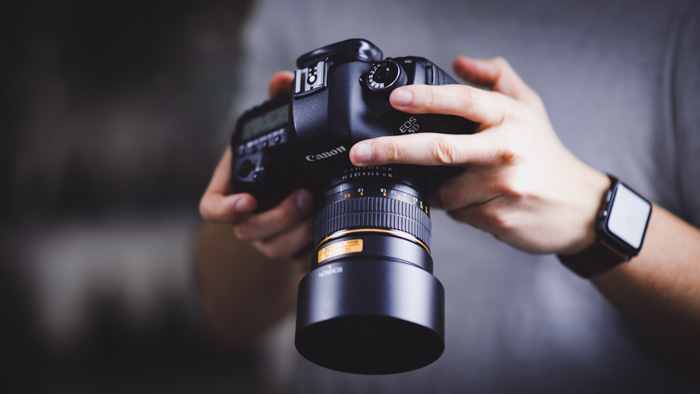
Performance
You may think that this is the most influential factor for comparison. But the performance between Canon or Nikon is so good. It would be ridiculous to generalise each manufacturer to try and decide which is best.
The best thing to do if your main interests lie in the performance of a digital camera is to compare key factors. These are the autofocus system, noise, megapixels, photos per second and even weight.
There are areas where Canon stands out where Nikon doesn’t and vice versa. Here, you would need to check things like Nikon camera reviews, Canon software and the Nikon vs Canon DSLR debate.
For example, I don’t like Canon’s auto white balance but Canon lenses are some of the best around. The Nikon menu system is poorly set out but their cameras handle noise very well.
It all comes down to which great cameras are in your price range. Canon and Nikon are trying to outdo one other. Hence, when we talk about both companies, it’s Nikon vs Canon all the way.
Cameras or Lenses
When you consider Canon’s most recent lens releases, and Nikon’s most recent camera releases, the choice is pretty simple: Do you want the chance to own the best lenses or the best cameras? It’s clear to me that in general Nikon make higher performing cameras these days but Canon’s lens division is kicking some ass. So which do you prefer? Nikon make very few “bad” lenses, just as Canon make few “bad” cameras, but which piece of the puzzle is going to inspire or enable your photography? That’s really what you have to ask yourself.
I own many of the Canon lenses that I listed above, and I love to see a new lens design that pushes optical boundaries. When I get a new lens that gives me a new ability, I run around with it attached to my camera for months and months, exploring new opportunities and looking for ways to create images that were previously not possible for me. When I get a new camera, it just tends to feel like a new tool. I’m excited for about a day, and then I move on. For this reason, I feel I’m well suited to the Canon brand.
How do you react to a new lens or a new camera? Understanding that is probably the key to making your choice between these two brands.
